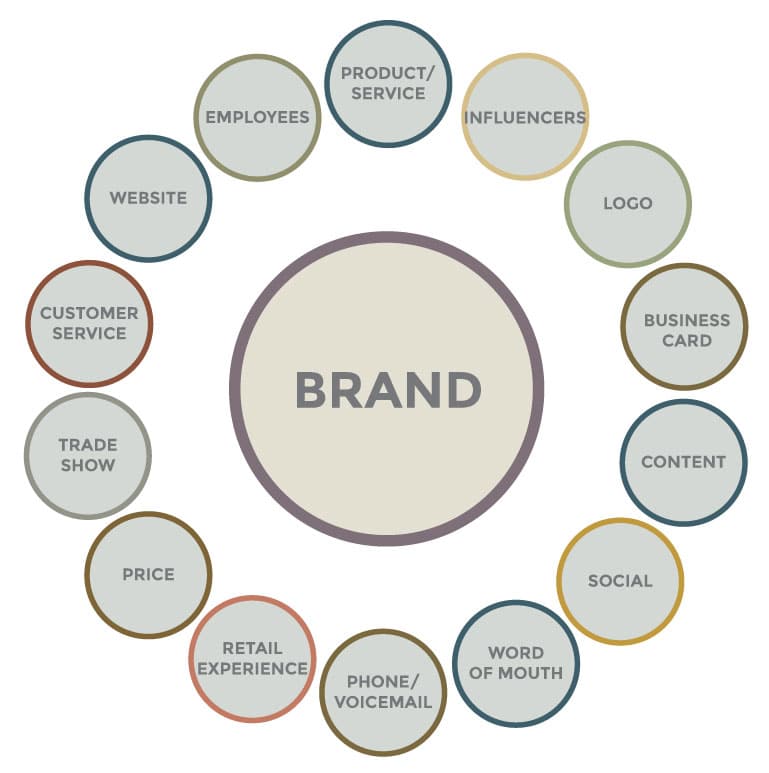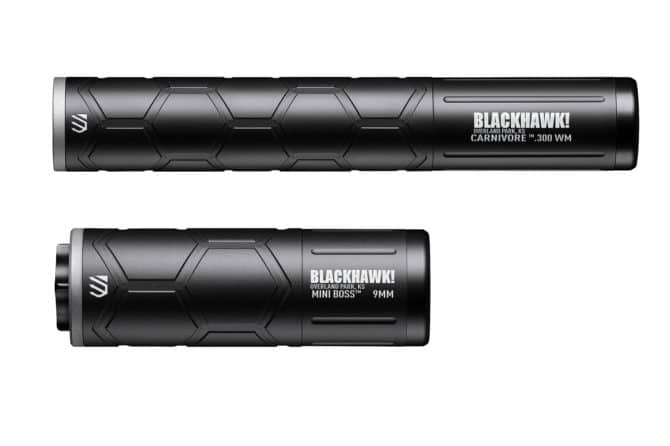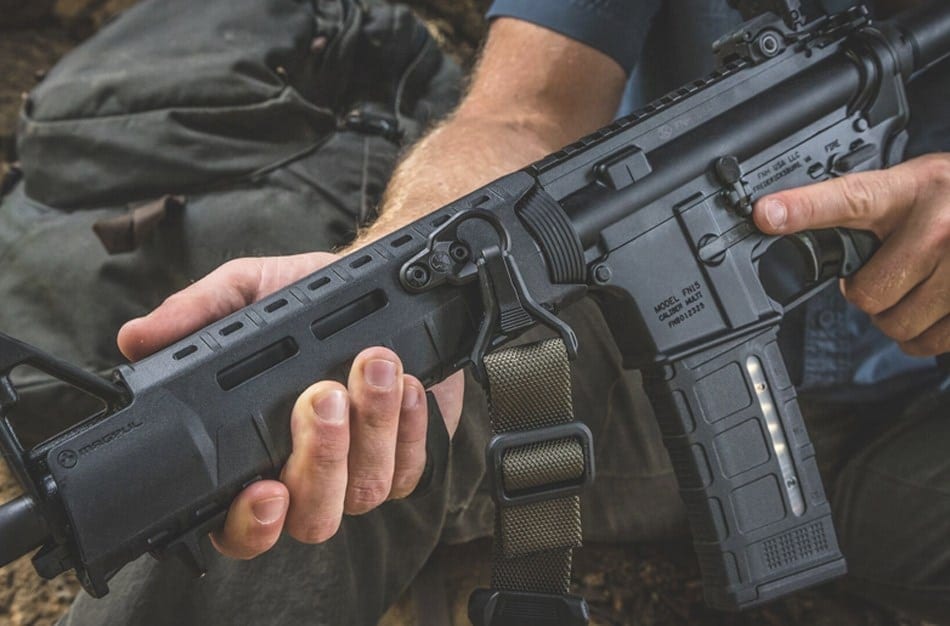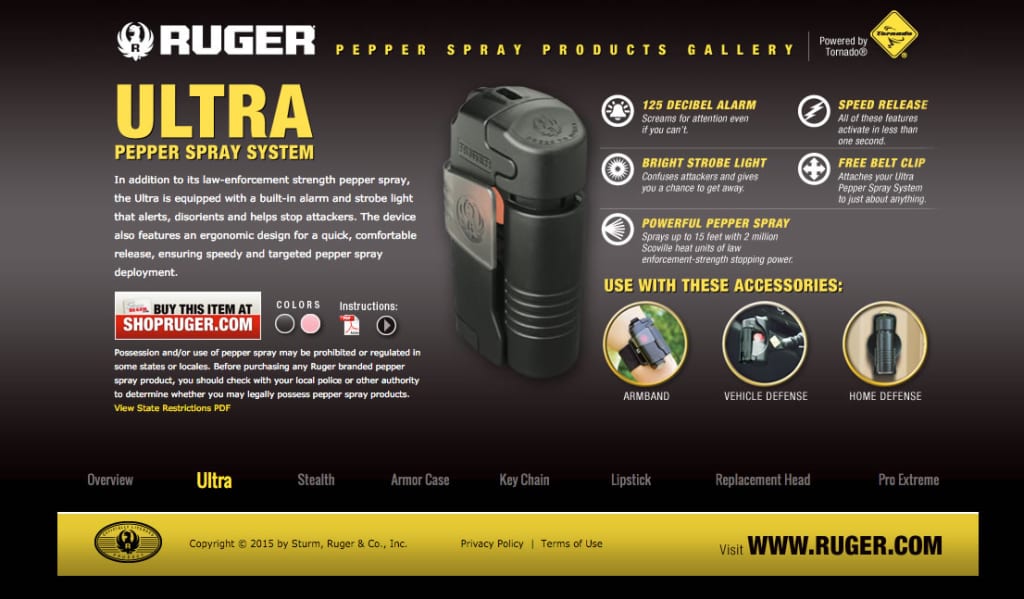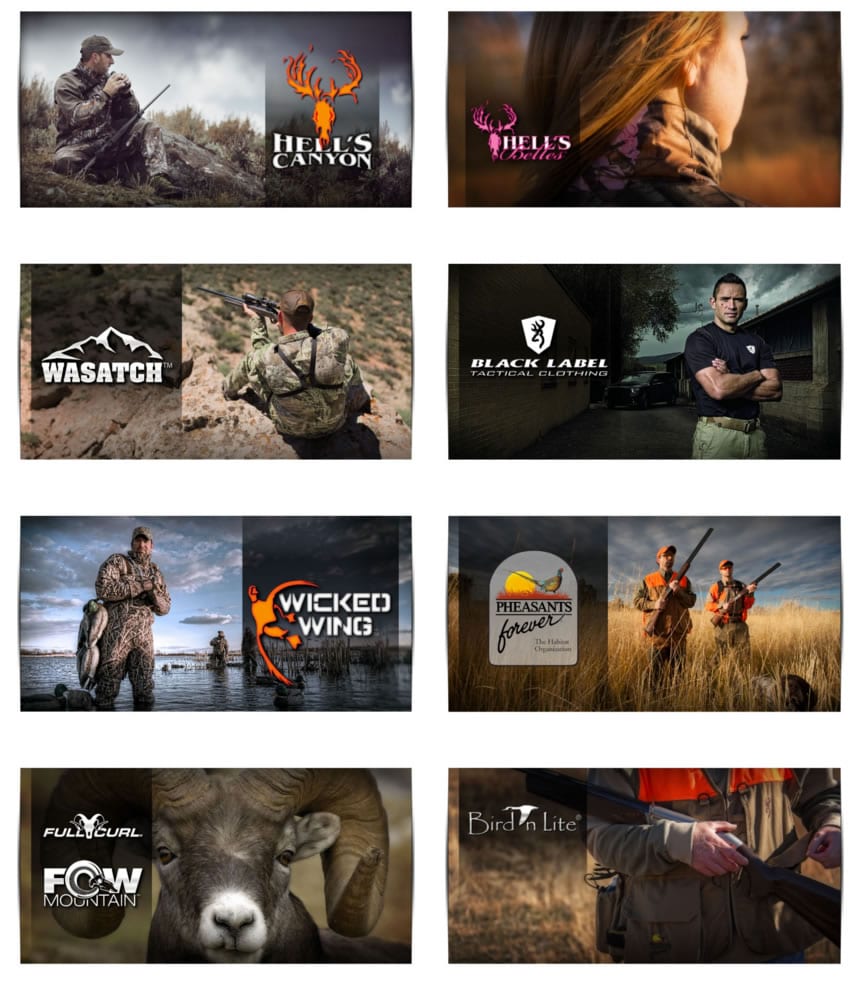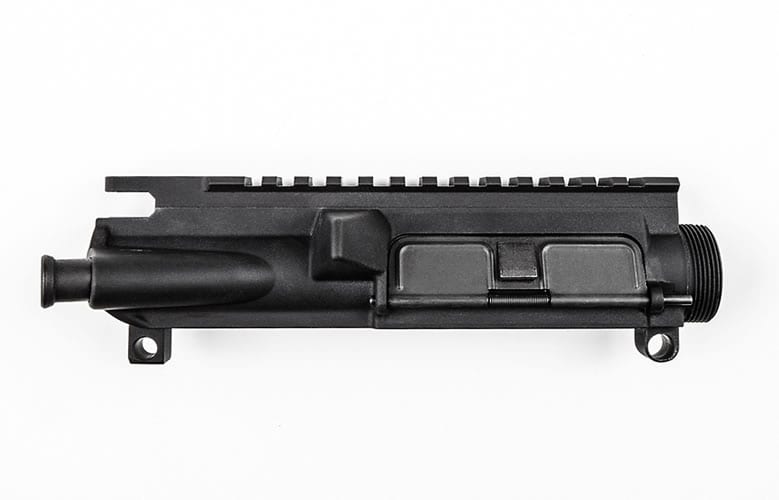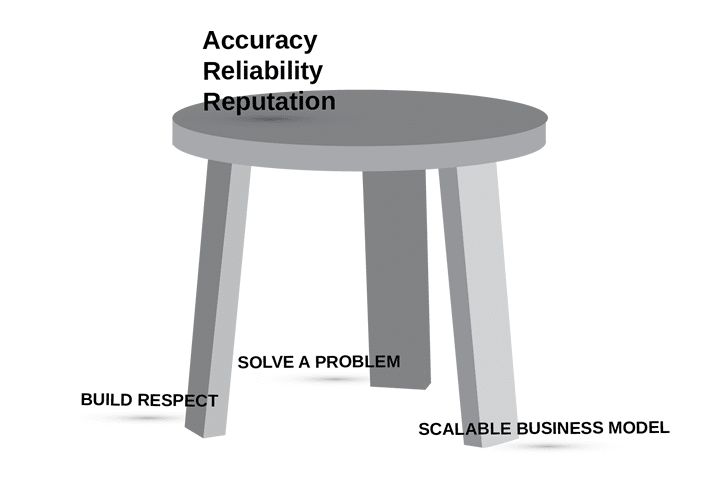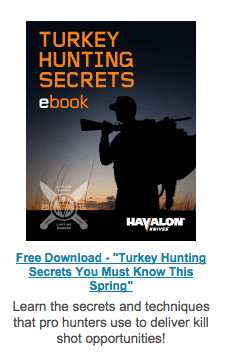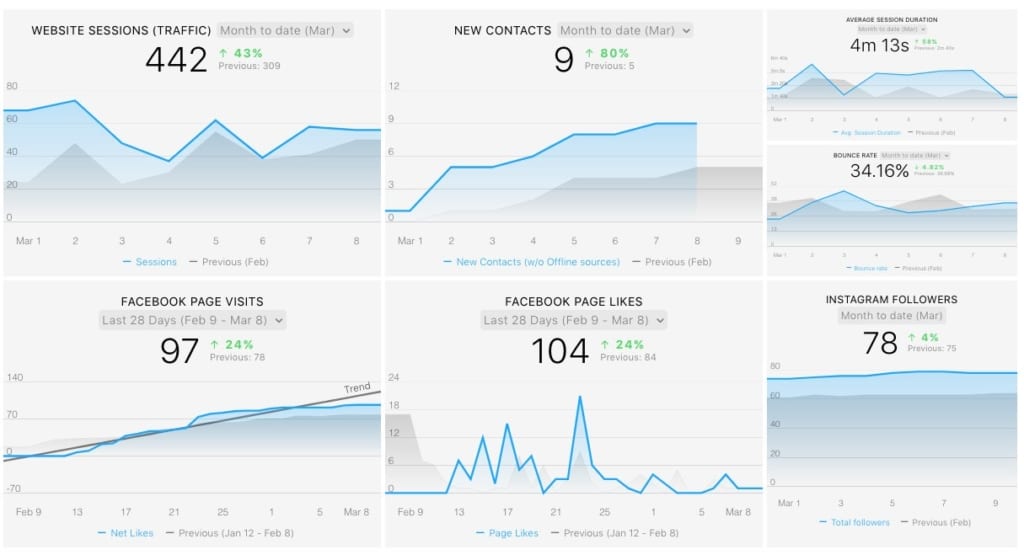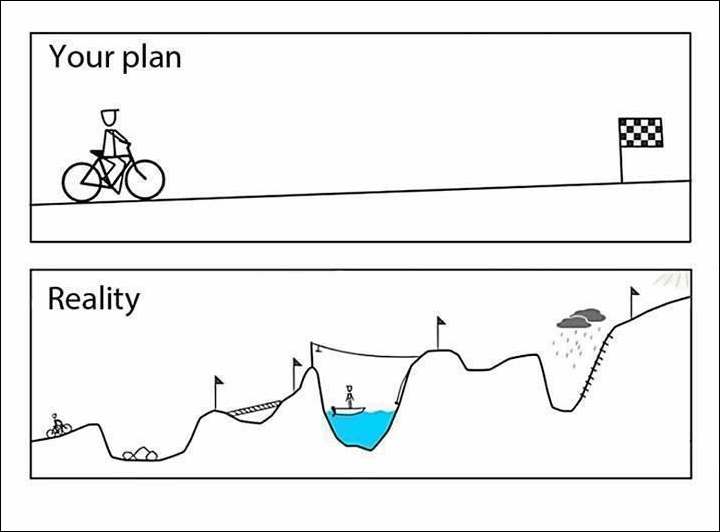
The brand is the entire experience that a person has with your business’ purpose.
Most brands start with their product/service and sell based on their features and benefits—which is important—but in doing so, leaves them only to compete on the product’s understanding, not its why.
“Brands have become the global currency of success.”
– Brand Atlas
At each touch point, your brand must be integrated for maximum efficiency that drives your prospect to your goals that simultaneously solves their needs and wants along the way.
If you’re interested in building a strong brand rather than just a product-based company, here are four points to keep in mind when thinking through how to strengthen your brand in 2018.
1. Map your brand’s touchpoints
When thinking about what a brand is, you need to understand that it’s not just 2-3 pieces like your website, logo or catalog—but all the pieces. It’s your dealer sheet, the way your product feels, your customer service, your influencers, content, email signature, Facebook and Instagram page—everything.
Here is a simple representation of what brand looks like:
Each touchpoint is an opportunity to increase awareness and build loyalty.
2. Align your brand
Ask yourself and your key stakeholders (the people with invested interest) what your brand means and write it down. Then go ask your customers what your brand means to them and then 10 or so of your employees. If they all say the same thing—congrats, you have brand alignment! If they say something different, then you may want to rethink your brand and figure out why there are inconsistencies.
Brand inconsistencies take away from your marketing’s effectiveness and create confusion among your prospects.
Common problems that cause brands to be out of alignment is clarity of the mission, customer service, brand identity and broken promises.
 Brand promise – If what you’re promising isn’t being delivered on, then your brand isn’t trustworthy. Today, trust is everything in the age of #fakenews. Make every effort to fix and make good on what your brand promises to its customers.
Brand promise – If what you’re promising isn’t being delivered on, then your brand isn’t trustworthy. Today, trust is everything in the age of #fakenews. Make every effort to fix and make good on what your brand promises to its customers.- Brand identity – Does your brand’s look and feel (color, shape, format, type, imagery, texture etc.) accurately convey the it’s key emotional and visual attributes? If not, it may be time for a redesign or invest in lifestyle photography.
- Customer-centered – Is your customer service receiving high-marks? Without strong brand alignment between your employer brand and corporate brand you will not be able to deliver customer-centered service.
3. Connect your brand to your customer
How do you connect your brand to your customer? In the past, most brand development processes solely focused on the product and what the marketer wanted the customer to think and feel. Today, every marketing brand strategy should start with the customer first. This can only be done by defining what is called a buyer persona.
Buyer personas are fictional representations of your ideal customers. They are based on real data about customer demographics and online behavior, along with educated speculation about their personal histories, motivations, and concerns.
By defining your buyer persona, you will be able to develop a strong brand foundation to help guide you when you get lost in the day to day activities of marketing and running your business. Keeping regular tabs on what your customer is feeling will help you build brand loyalty more quickly.
The fastest way to connect your brand is to communicate how you solve your customer’s problem. Track these data points through your online forms, Facebook insights, analytics and artificial intelligence programs. It doesn’t hurt to survey your customers every once and while either.
“Solve their problems and be empathetic.”
– Gary Vaynerchuk
4. Brand is built on consistent, helpful service
Are you using Facebook Messenger, Drift or Intercom on your website to answer customer questions? These new tools allow you to communicate in real-time that have become central in providing an excellent customer service experience online. One bad customer experience, late delivery or rude response can tarnish your brand—especially when the person on the receiving end posts what happened on Facebook for the whole world to know.
The hard truth about your customers today is:
- They want to help themselves, not call you.
- They learn from friends, not salespeople.
- They trust your customers, not your marketing.
According to Harvard Business Review: Evidence shows that customers will no longer tolerate the rushed and inconvenient service that has become all too common. And now with voice chat, chatbots and AI hitting the web, customers are more empowered than ever and demand answers to their questions faster than before. For example, 61 percent of participating Baby Boomers say a potential chatbot benefit is “getting an instant response,” while just 51 percent of Millennials say the same. (Source: Convince and Convert) The total chat volume in 2016 nearly tripled that in 2015. Both statistics can back up the conclusion that the demand for live chat has been steadily growing. (Source: Comm100)
Our recent research demonstrates that when customers contact companies for service, they care most about two things:
- Is the frontline employee knowledgeable?
- And is the problem resolved on the first call or chat?
Yet these factors often aren’t even on customer service manager or business owners’ dashboards. Most service centers continue to measure time on hold, time to respond and minutes per call, as they have for decades. Such metrics encourage agents to hurry through calls—resulting in just the kind of experience customers dislike.
According to HubSpot, The key to growth in 2018 is:
- Happy customers who recommend your company to their friends
- Successful customers who share their results with the world
- Modern customer support that matches how people communicate
More than half of the customers we surveyed across industries say they’ve had a bad service experience, and nearly the same fraction think many of the companies they interact with don’t understand or care about them. On average, 40% of customers who suffer through bad experiences stop doing business with the offending company. (SOURCE: HBR)
In conclusion, to strengthen your brand, you must map every touchpoint, align for consistency, connect with your customers problems by putting them center and focus on delivering helpful, consistent service. Once these touchpoints are built out and set, then you are able to provide a great experience built on the standards of today’s empowered consumer that will reward your company with future sales growth.



